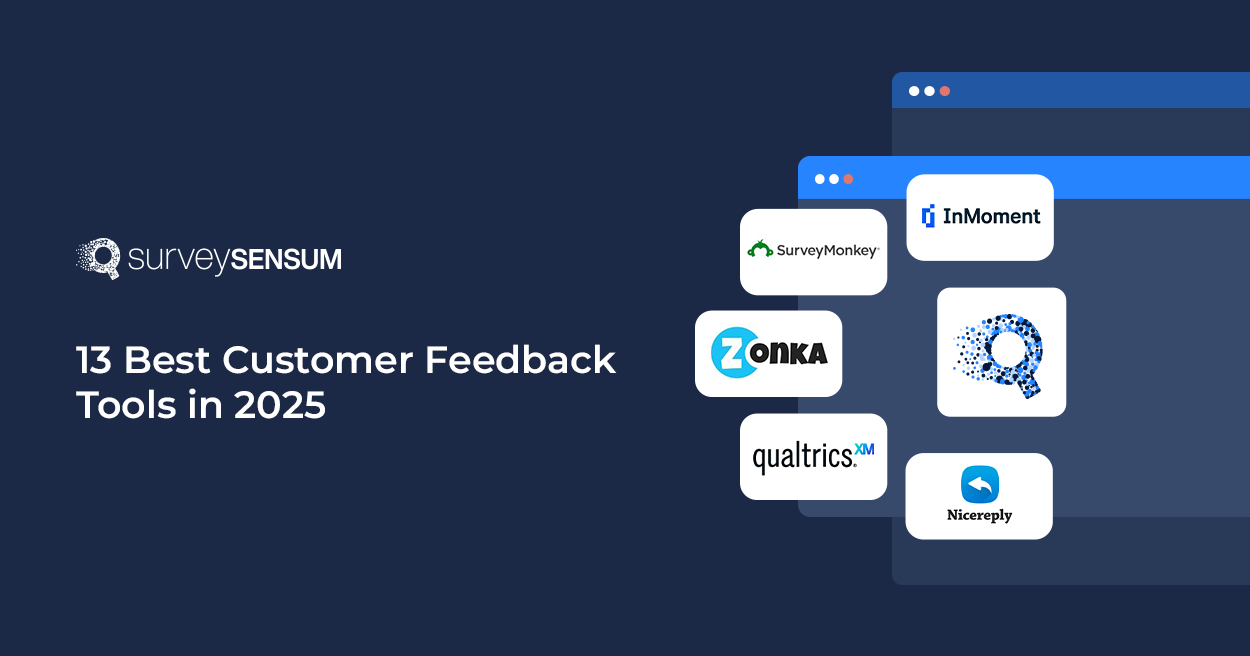
Are your patients satisfied with the healthcare services you are providing?
Are there any hidden gaps that could be impacting their trust and loyalty?
That’s where the Patient Satisfaction Score comes in – a direct reflection of your quality of care, communication, and overall patient experience.
Intrigued about it? Let’s talk about it in detail.
What is the Patient Satisfaction Score?
Patient satisfaction score is a key customer experience metric that measures how satisfied patients are with their healthcare provider. It revolves around the patient’s experience of the care quality, patient communication, healthcare services, wait time, staff behaviour, and overall experience.
For example,Imagine a hospital conducts a patient satisfaction survey after each visit. One of the key questions asks:
“On a scale of 1 to 10, how satisfied were you with your consultation?”If most patients rate their experience 8 or higher, it indicates strong satisfaction and loyalty. However, if many give low scores and leave feedback like:
- “The wait time was too long.”
- “The doctor rushed through my consultation.”
The hospital can use this data to reduce wait times and improve patient care, leading to higher satisfaction and better patient retention.
But is it worth spending time and resources on this?
Why Does Patient Satisfaction Score Matter?
Do you think you will return to a clinic where you had to wait for 2 hours, got your information mixed up, and didn’t get the desired help? No! This is why a patient satisfaction score matters.
1. Impacts Retention and Loyalty: A study by the Bain & Company found that loyal customers are 5 times more likely to return for future purchases and 4 times more likely to refer others. The same also goes for healthcare industries. Hospitals and clinics that actively monitor their patient satisfaction score can address issues before patients leave negative reviews or switch providers.
2. Leads to Better Health Outcomes: Patients who feel heard and valued are more likely to follow treatment plans, attend follow-up appointments, and engage in preventive care. According to a study by NCBI, patients with high satisfaction scores are 2.6x more likely to follow treatment plans correctly.
3. Impacts Financial Performance: A high PSS isn’t just good for patients – it’s good for business. Accenture found that U.S. hospitals with superior patient experiences achieve net margins 50% higher than those with average patient experiences.
4. Online Reputation Management: In the digital age, 88% of patients use online reviews to evaluate healthcare providers before making an appointment. A low patient satisfaction score often translates to negative online reviews, which can deter potential patients and damage an organization’s reputation.
Now let’s dive into the calculation part.
How to Calculate Patient Satisfaction Score?
Calculating the patient satisfaction score helps healthcare providers measure and improve the quality of care. Here’s how you can do it:
1. Collect Patient Feedback

Use patient satisfaction surveys with questions about:
- Doctor-patient communication
- Wait times
- Facility cleanliness
- Staff behavior
- Overall experience
Launch personalized patient surveys in minutes and take actionable steps toward better healthcare services with SurveySensum!
2. Calculate the Patient Satisfaction Score
The formula for the patient satisfaction score is:
PSS = (Total Positive Responses)/(Total Response)*100
For example:A hospital collects patient feedback from 200 patients. The results show:
- 160 patients gave a 4-star or 5-star rating (Positive Responses).
- 40 patients gave a 1-star, 2-star, or 3-star rating (Neutral/Negative Responses).
Now, applying the formula: PAA = (160/40)*100 = 80% So, the patient satisfaction score is 80%, meaning 80% of patients had a positive experience.
3. Analyze and Improve
Once you calculate the score, identify gaps and take action to enhance patient experience.
- Reduce wait time
- Improve doctor-patient communication
- Train staff for better interactions
- Upgrade hospital facilities
Regular tracking ensures that patient satisfaction improves over time, leading to better retention, positive reviews, and improved healthcare outcomes.
Now before wrapping up, let’s see how the right patient feedback tool can help you elevate this process.
Measuring Patient Satisfaction Using SurveySensum
SurveySensum is a powerful and easy-to-use patient feedback tool designed to help healthcare providers measure satisfaction across all touchpoints. Here’s why SurveySensum is the ideal choice for tracking patient satisfaction scores:
- CSAT and NPS Tracking: Measure patient satisfaction (CSAT) and loyalty (NPS) with real-time insights into their healthcare experience.
- Omnichannel Feedback Collection: Gather responses via email, SMS, mobile, tablet, kiosks, websites, QR codes, live chat, and WhatsApp to capture on-site and remote feedback seamlessly.
- Ready-to-Use Surveys and Customization: Get started with pre-built patient survey templates or create custom surveys with flexible question types tailored to your needs.
- Automated Reports and Real-Time Analytics: Get instant insights with live dashboards, AI-driven text analysis, and real-time alerts for quick decision-making.
- Seamless Integrations: Connect with CRM, EMR/EHR systems, helpdesk software, and collaboration tools for smooth workflow automation.
- Survey Automation and Triggers: Set up surveys after consultations, patient discharge, or treatment completion to gather timely feedback without manual effort.
With SurveySensum, healthcare providers can identify pain points, enhance patient experience, and improve overall care quality with data-driven insights.
Wrapping Up!
The patient satisfaction score is more than just a number – it’s a key indicator of healthcare quality, financial performance, and patient loyalty. Organizations that prioritize patient satisfaction see higher retention, better treatment outcomes, and stronger reputations.
With SurveySensum, you can collect real-time feedback, analyze insights instantly, and take action where it matters most. Whether it’s CSAT, NPS, or multi-channel surveys, SurveySensum makes it easy and efficient.
Start measuring patient satisfaction today and deliver the best healthcare experience possible with SurveySensum!
Frequently Asked Questions
Patient Satisfaction Score is typically calculated using surveys that assess various aspects of care. A common method is:
PSS = (Total Positive Responses)/(Total Response)*100
The 5-point Likert scale is a popular way to gauge patient satisfaction, with responses ranging from:
- 5 star rating (Very Satisfied)
- 4 star rating (Satisfied)
- 3 star rating (Neutral)
- 2 star rating (Dissatisfied)
- 1 star rating (Very Dissatisfied)
A Patient Satisfaction Score reflects how satisfied patients are with their healthcare experience. It’s based on feedback from surveys covering factors like communication, wait times, staff behavior, and overall care quality.















